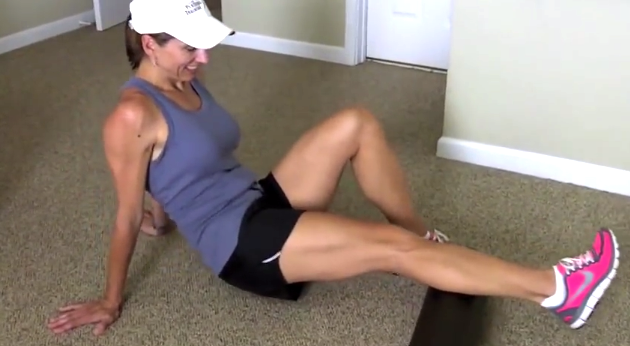770-454-7167

Often, I suggest that clients use a foam roller, and because they are widely available and frequently used by other people in the gyms I work in, I take it for granted that they know what I mean. When I manage to stop myself, and check in with them, I realize that I’m making one heck of an assumption. People look at me, smile and politely agree to use the foam rollers, but they quietly have no idea how to even begin using it appropriately.
So, I decided that I should do a workshop on how to use a foam roller. Then I thought to myself: “Self, why would you stop there? If you’re going to do it, and educate people, then do it all the way. Do workshops on the other self-care activities you most frequently recommend: stretching and mobility drills.”
I decided to offer a 3-part series of mini-workshops designed to help people understand what trainers and massage therapists mean when we recommend different self-care techniques, in conjunction with their regular fitness regimen. I thought it could be helpful to do a series of blogs to accompany the workshops, for those who cannot make it, and as a reference for those who can make it. The first one is going to simply focus on the foam roller.
My intention is to provide you with a basic knowledge of what might be going on, physiologically, when you are foam rolling, and how to take that knowledge and apply it intelligently to address your specific issues with a foam roller.
The truth is that we’re not entirely sure exactly what is happening when we foam roll. So don’t ask…what you don’t know can’t hurt you, right? OK, in reality, things we don’t know can hurt us a lot. But in this case, we do have enough of an idea to know that it’s a pretty safe practice, and that it’s likely to do more good than harm. By a lot. Currently, a lot of research suggests that static stretching can help you gain flexibility, and some range of motion, but that it also could have an inhibitory effect on the stretched muscles, for potentially up to 24 hours. Foam rolling, so far, doesn’t seem to have the same kind of inhibitory side effect, but can help “loosen” up muscles, and allow for better range of motion. An improved range of motion means better performance, and freer movements, and that freedom of movement can mean less risk of injury.
Because it doesn’t seem to have that inhibitory effect, foam rolling is great as a pre-workout warmup. It can also be used after your workout, or even just on a rest and recovery day. More importantly than specifically when you use it, is that you use it regularly.
Well, the thing here is that it’s going to be a little tough to express with the written word. But we’ll give it a shot. First, think of foam rolling as self-massage, deep tissue massage with some trigger point therapy. If you’ve never had a deep tissue, or neuromuscular (trigger point) massage, it’s often uncomfortable.
With that said, one of the common basic instructions for foam rolling is to find a tender spot in the muscle that you need some release from, and keep your pressure on that tender spot for about 30 seconds, or until the tenderness decreases.
You can control the amount of pressure by how much weight you are putting onto the foam roller. This can mean changing your position, pressing down onto the roller, stacking your legs on one another on the roller, etc. Get creative!
Another way that I like to use the foam roller is to not only pin that tender spot, but also to make the muscle move around, while it’s on the foam roller. This means you need to know something about the anatomy you are targeting, since you need to know what movements that muscle creates. For instance, if I am pinning my calf muscles, I will move my foot and ankle around in as many different directions as possible. This pulls the calf muscles around while they are pinned on the roller, and that helps (in my perception) the fibers of the muscles to separate and free up.
With any luck, that makes sense. If not (and even if it does), then check out some of the videos below, in order to get an idea of how to address specific muscles.
In my next entry, I will address stretching, and some of the same recommendations for why, how and when to stretch. After that, I will take a look at mobility exercises and drills, with the same intention to arm you more information to strategically pick your mobility drills, and know when to use them! In the meantime, happy rolling!
Here’s a short and sweet one, Foam Roller Series – Hamstrings and Calves, from local North Point Fitness, a friend of the Atlanta Personal Trainer Program.
Comments are closed.